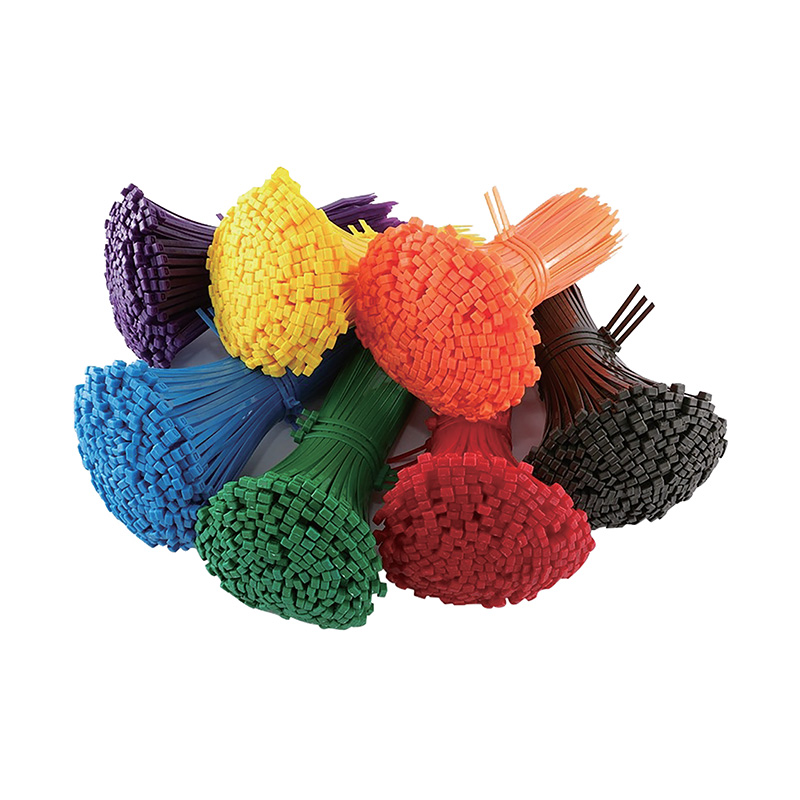Understanding and selecting the correct IP rating is essential when choosing a Waterproof Junction Box or Waterproof Distribution Box. It ensures safety, reliability, and long-term...
READ MORE-
-
Outdoor electrical installations face unique challenges that require specialized components to ensure their reliability and safety. Among the more important components are metal ca...
READ MORE -
Durability is a key factor when designing and maintaining electrical systems. With so many environmental challenges that electrical installations face—such as excessive temperature...
READ MORE -
Safety compliance is not just about adhering to regulations; it’s about protecting people, equipment, and infrastructure from the risks of electrical hazards. Electrical fires, sho...
READ MORE
Industry Knowledge Extension
What Exactly is a Nylon Cable Tie?
1: The Anatomy of an Everyday Object
At its core, a nylon cable tie is a type of fastener designed to bundle items together, typically wires and cables. Its fundamental design is a testament to elegant simplicity, consisting of two main integrated parts. The is a sturdy, flexible nylon tape that features a series of parallel teeth or ridges on one side. The second component is a small, rectangular open case or pawl located at one end of the tape. This pawl contains a flexible tooth that engages with the ridges on the tape. The mechanism operates on a straightforward principle: the tapered tip of the tape is inserted into the pawl and pulled through. The pawl’s tooth clicks against the ridges, allowing movement in one direction while locking against reverse motion. This creates a secure, self-locking loop that is difficult to open without cutting the device. This one-way ratchet design is the fundamental innovation that makes the cable tie both effective and permanent for applications.
2: A Material World: The Role of Nylon
The choice of material is not incidental; it is crucial to the cable tie’s widespread functionality. Nylon, specifically Nylon 6/6, is the predominant polymer used in manufacturing high-quality ties. This material offers a unique combination of properties that make it ideally suited for the task. Nylon possesses high tensile strength, meaning it can withstand significant pulling force without breaking, ensuring that bundled items remain securely held. Secondly, it is inherently flexible and durable, allowing it to be bent and looped without fracturing. Furthermore, nylon is resistant to a variety of environmental challenges, including abrasion, corrosion, and many chemicals. It also has a relatively high melting point, providing some degree of flame resistance and suitability for various temperatures. Finally, through additives introduced during production, nylon cable ties can be manufactured with enhanced properties, such as UV resistance for outdoor use or specific colors for coding and identification purposes. The material’s versatility is a key reason for the product’s dominance.
What is the Function of a Cable Wire Tie?
The primary function of a cable wire tie is to organize and secure, but this simple purpose branches into several critical applications that underscore its importance in modern infrastructure.
1. Organization and Management: The visible function of cable ties is in the management of clutter. In environments overflowing with wires—such as data centers, office workstations, home entertainment systems, and vehicle engine bays—cable ties provide an efficient solution for grouping loose cables into neat, manageable bundles. This organization is not merely aesthetic; it significantly reduces the risk of tangling, simplifies troubleshooting and maintenance by making individual wires easier to trace, and improves airflow around electronic equipment, which can aid in cooling and prevent overheating.
2. Securement and Stabilization: Beyond simple bundling, cable ties are extensively used for fastening objects in place. They are indispensable in construction and automotive industries for securing wiring harnesses to frames, chassis, or conduits. This prevents wires from dangling or vibrating loose, which could wear, damage, or short circuits over time. In creative and domestic contexts, they are used to secure garden plants to stakes, bundle tools, or temporarily repair broken items. Their ability to be tightened firmly around objects of various shapes makes them an incredibly versatile tool for stabilization.
3. Identification and Safety: A secondary, yet highly valuable, function is facilitation of identification and enhancement of safety. Cable ties are available in a wide array of colors, which can be used as a color-coding system to quickly identify specific circuits, voltage levels, or network pathways in complex systems. This aids technicians in navigating intricate setups efficiently and safely. Additionally, specially designed safety ties, such as those with smooth edges or releasable mechanisms, are used in applications where abrasion against sharp edges or the need for non-permanent fastening is a concern, thereby protecting both the bundled items and the user.
A Comparison of Cable Ties and Zip Ties
The terms "cable tie" and "zip tie" are often used interchangeably in everyday language, a common perception that they are identical. However, a subtle distinction can be drawn based on context, with "zip tie" often functioning as a genericized trademark, while "cable tie" describes the broader product category.
From a functional standpoint, any observable differences typically arise from variations in quality, material, and intended application rather than the names themselves. Generally, the term "cable tie" might imply a standard-grade product designed for general-purpose bundling tasks, such as organizing computer cables or securing household items. These are usually made from nylon and are effective for light to medium-duty applications.
Conversely, the name "zip tie" is historically derived from a brand name and is now commonly used to refer to all such products. However, it can sometimes be associated with heavier-duty versions. For instance, high-strength, UV-stabilized, or stainless steel-reinforced ties used in industrial, construction, or marine environments might be more specifically referred to as heavy-duty cable ties, though many would still colloquially call them "zip ties." The key differentiator is not the name but the product specifications, such as tensile strength, length, material composition, and resistance properties.


 English
English 中文简体
中文简体 Español
Español عربى
عربى











